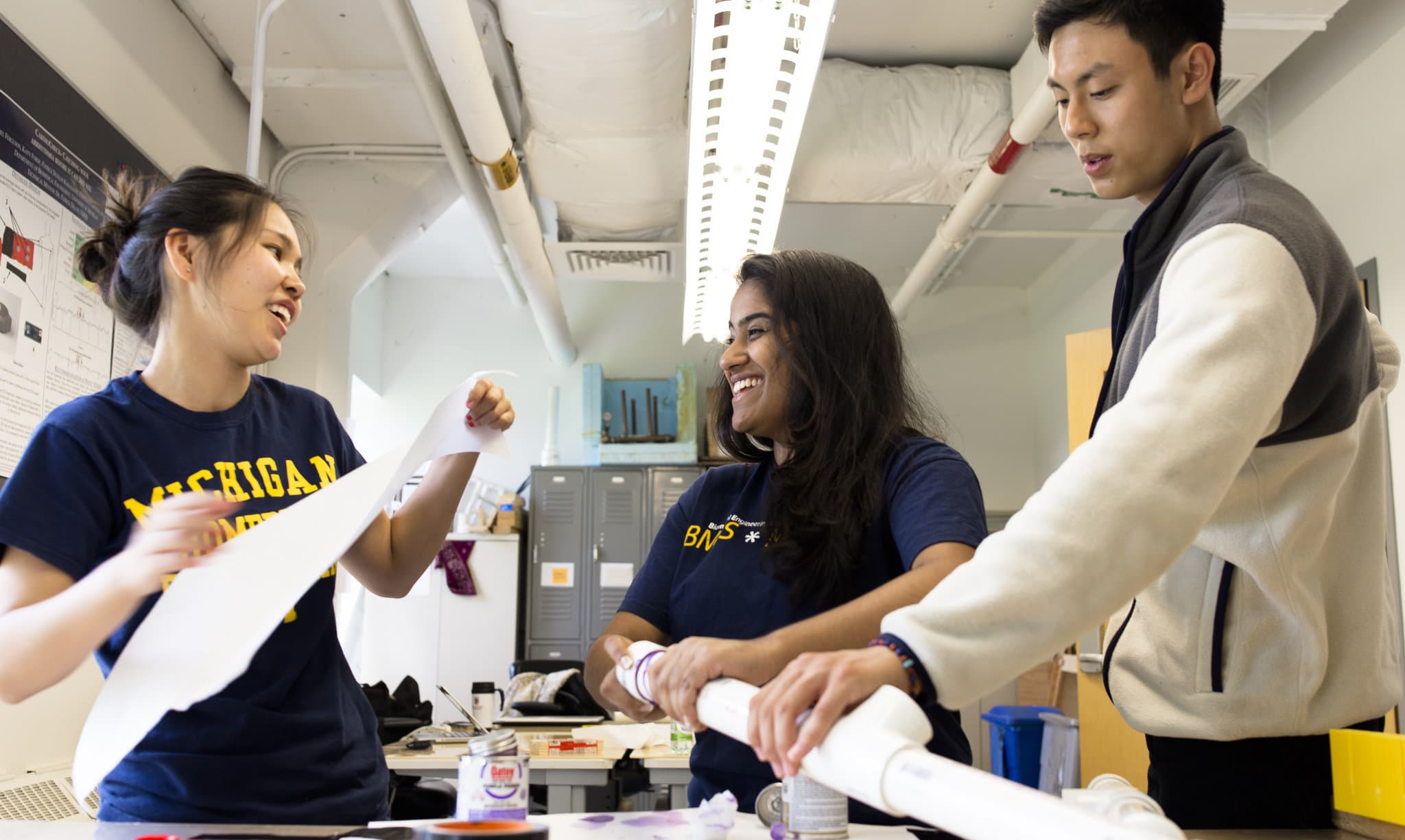
Clinical Peer Mentors
Identifying clinical needs and resources for the BME design program

Identifying clinical needs and resources for the BME design program
This summer marks the second round of a new clinical peer mentor (CPM) program that offers internships to BME students interested in documenting clinical needs and resources for BME design courses.
The program is part of a series of NIH-supported enhancements to the design program. Its goal is to pick up where BME 499/Clinical Observation and Needs Finding leaves off to ensure that students in the senior design courses hit the ground running with curated, well-researched project options.
It’s also a rich experience for the peer mentors themselves, who learn to navigate the clinical environment and interact with healthcare providers to identify the kinds of clinical problems that are ripe for BME solutions.
“The clinical peer mentors start with material from the needs finding class,” says BME lecturer and CPM advisor Rachael Schmedlen. “After training in observational frameworks and U-M Health System protocols, they begin working in the various medical departments where needs were identified. They shadow providers, observe procedures, and conduct interviews. They also dig into the prior art – what solutions exist and how crowded the patent space is. From there, they determine the most promising needs and provide the background that design groups will need to begin tackling the problem. The process often leads CPMs to identify new needs, as well.”
In its first year, the program hosted two interns, BME undergraduates Ayana Dambaeva and Rodrigo Rangel (now a graduate student at the University of Southern California). One of the needs they identified – a method to help patients with multiple sclerosis improve their “key pinch” – was chosen as a project in BME 450, the semester-long senior capstone design course. The group developed a sensory-feedback device that was recently selected as a project abstract for the 2016 Biomedical Engineering Society (BMES) Annual Meeting (see photos).
Another CPM-identified need fed into the year-long senior design course – an add-on that works with smaller-profile, pediatric bronchoscopes to improve suction capability. The design students who chose it believe their solution will change the way physicians perform the procedure. They are now soliciting physician feedback to gauge their receptiveness to this new approach, solidifying intellectual property, completing a second prototype, and beginning a commercialization strategy.


This year’s CPM cohort grew to five, including Ayana Dambaeva, Renee Hanna, Jennifer Lee, Madhu Parigi, and Hongfeng Zhao. They investigated more than 20 clinical needs from BME 499 and identified a half-dozen new ones, ultimately narrowing their recommendations down to four. They include helping bedridden patients preserve their range of motion, enhancing the fit of CPAP machines for sleep apnea patients, improving the egg retrieval procedure for in vitro fertilization, and designing a disposable water heater/cooler to improve heat transfer in extracorporeal membrane oxygenation (ECMO).

The CPMs also continued to develop key BME student resources. These include clinical handbooks that guide students in shadowing various departments, with information specific to each department’s functioning, special terminology, and clinical background. The interns are also producing videos that share best practices, expert insights, and lessons learned in needs finding, the design process, entrepreneurship, and career development for BME students. The videos are designed to supplement training provided in design classes and to provide exposure to the clinical environment that some students may not have the opportunity to experience.
Another activity undertaken by the CPMs was training to become operating room (OR) chaperones for BME students in the capstone design and needs finding courses. BME students working on projects related to unmet needs in the OR are able to observe procedures when an OR chaperone is present.

Schmedlen says students drawn to the CPM experience tend to be those interested in going into the medical device industry who want exposure to the environment where the devices are used and the opportunity to explore how doctors and nurses think about them. Others plan to go to medical school but are eager to stay on the innovation path; they are interested in various specialties’ innovation needs.
The Clinical Peer Mentor program is supported by NIH grant 5R25EB019898-02.